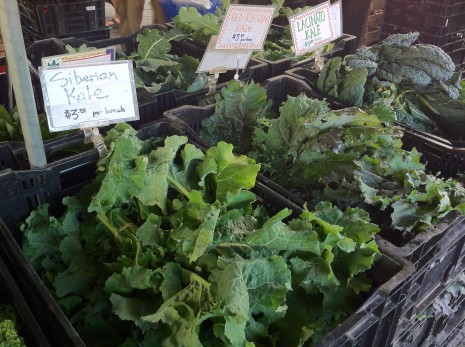KASHMIRI GREENS
As always, March is a challenge. It’s such a fretful month: Snow is still on the ground and the wind has the force of winter behind it, but blazing blue skies, a sun the color of a rich egg yolk, and longer days make it impossible to stay inside, even though I lost my gloves.
In our kitchen, March’s shiftiness translates to ennui. Here in the Northeast, we won’t see local asparagus and other spring vegetables until late April or, more likely, early May. Instead, we’re stuck with the same-old, same-old winter vegetables and greens.
So this is the time for buying a new tub of the Korean chile paste called gochujang and using it with abandon. For tossing broccoli and carrots with gingered butter or lightly coating wedges of sweet potatoes or winter squash with a minimally processed “virgin” coconut oil before roasting to give them a deep coconutty flavor. And as far as pot greens—you know, collards, kale, and other dark leafy greens for braising—are concerned, it’s time to look beyond the influences of the American South (ham hock or other seasoning meat and pepper sherry) or Italy (garlic and red pepper flakes). March requires different flavors to spark interest and appetite.
Perhaps because my sister-in-law is gallivanting around India as I write this, that is where my culinary druthers are taking me. Although Kashmir, up in the mountains of northern India, is renowned for its meat dishes and Persian-style pilafs, the greens there are treated splendidly as well. The recipe below is from New York City chef Floyd Cardoz. About eight years ago, I had the good fortune to work with him on his book, One Spice, Two Spice: American Food, Indian Flavors, and this recipe is one of many that has stayed in my repertoire ever since. It’s simple, delicious, and versatile: In Kashmir, you will see it made with kohlrabi greens or collards, but you can use any hearty braising green. Adding bok choy or pea shoots to the pot provides finesse and freshness.
The only specialty ingredient you’ll need is asafetida, a spice that comes from the dried gum resin of the giant fennel plant. It stinks to high heaven (the name comes from the Latin foetidus, “fetid”), but don’t let that put you off; like fish sauce, anchovies, or shrimp paste, it gives balance, a mellow depth, and resonance to a dish. (It’s said to be one of the mystery ingredients in Worcestershire sauce.) It’s also considered a digestive aid, which is why it’s often added to legumes. Asafetida comes in lump or ground form; the latter is easiest to deal with, and Floyd’s brand of choice is Vandevi, available at Indian groceries and any number of online sources. You’ll want to store the tin in a tightly sealed container; kept in a cool, dark, dry place, it will last for ages.
Kashmiri Greens
From One Spice, Two Spice: American Food, Indian Flavors, by Floyd Cardoz and Jane Daniels Lear (William Morrow, 2006)
Serves 6
These greens are wonderful with steak, chicken, or fish, but are so full-flavored they can turn a bowl of rice into supper.
4 pounds collards or other pot greens
1 tablespoon canola oil (preferably a non-GM brand) or extra-virgin olive oil
¼ teaspoon asafetida
2 teaspoons cumin seeds
2 large shallots, sliced
½ cup julienne strips peeled fresh ginger
1 small (about 2 inches long) dried red chile, broken in half (or into smaller pieces, if you want a spicier dish)
Coarse salt and freshly ground black pepper
1. Discard any tough stems or center ribs from the collards. Chop the tender stems and set aside, then roughly chop the leaves.
2. Heat the oil in a 4-quart pot over moderately high heat until it shimmers and add the asafetida and cumin seeds. Cook, stirring, until the spices are fragrant, about 1½ minutes. Add the shallots, ginger, and chile, and cook, stirring, until the shallots are translucent, 3 or 4 minutes.
3. Add the tender collard stems and season with salt; cook, stirring, 1 minute. Add the collard leaves and cook, tossing occasionally with tongs, until just tender, 15 to 20 minutes. Discard the chile and season with salt and pepper.
Posted: March 11th, 2014 under cookbooks, early spring, recipes, vegetarian.


